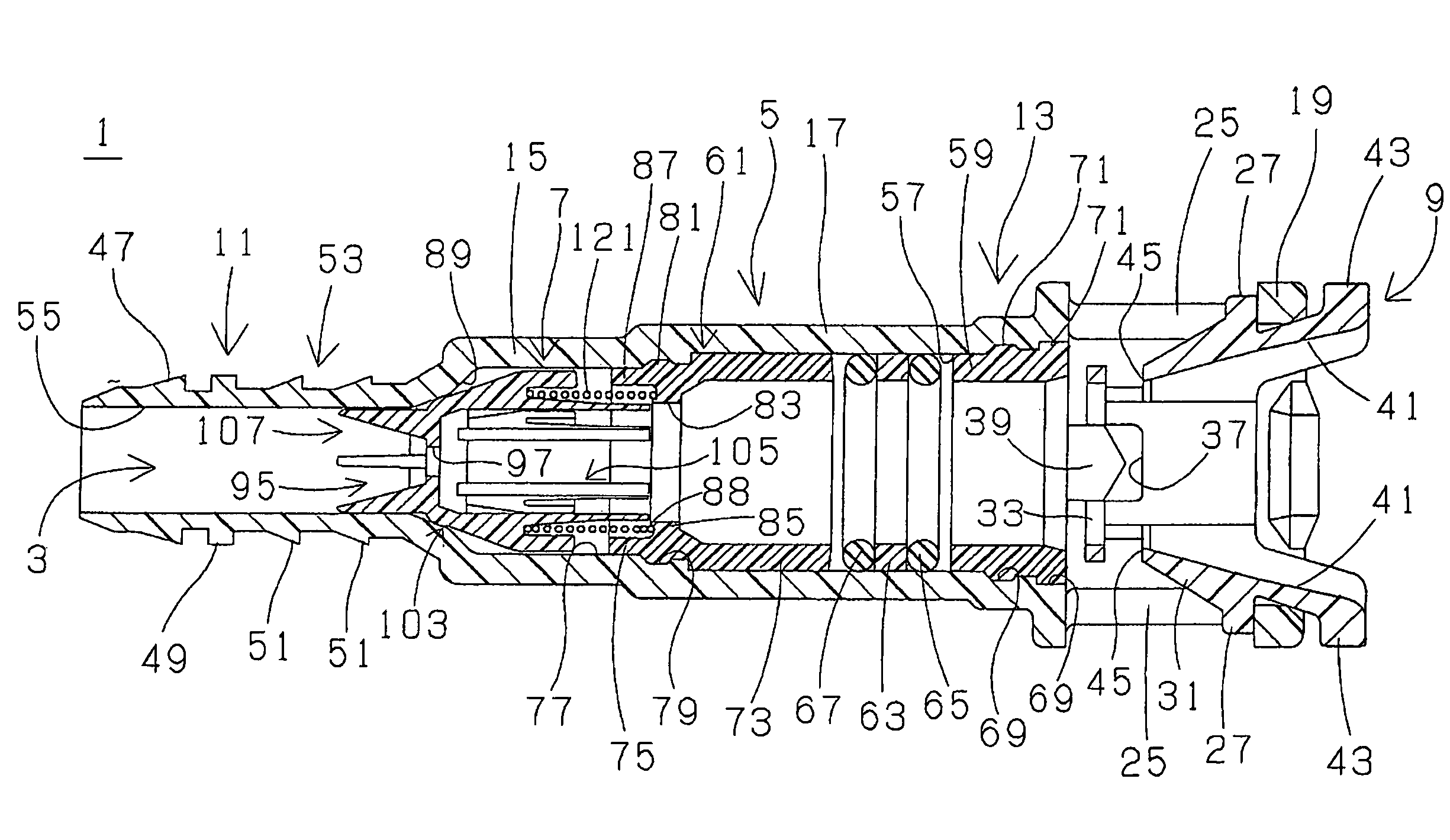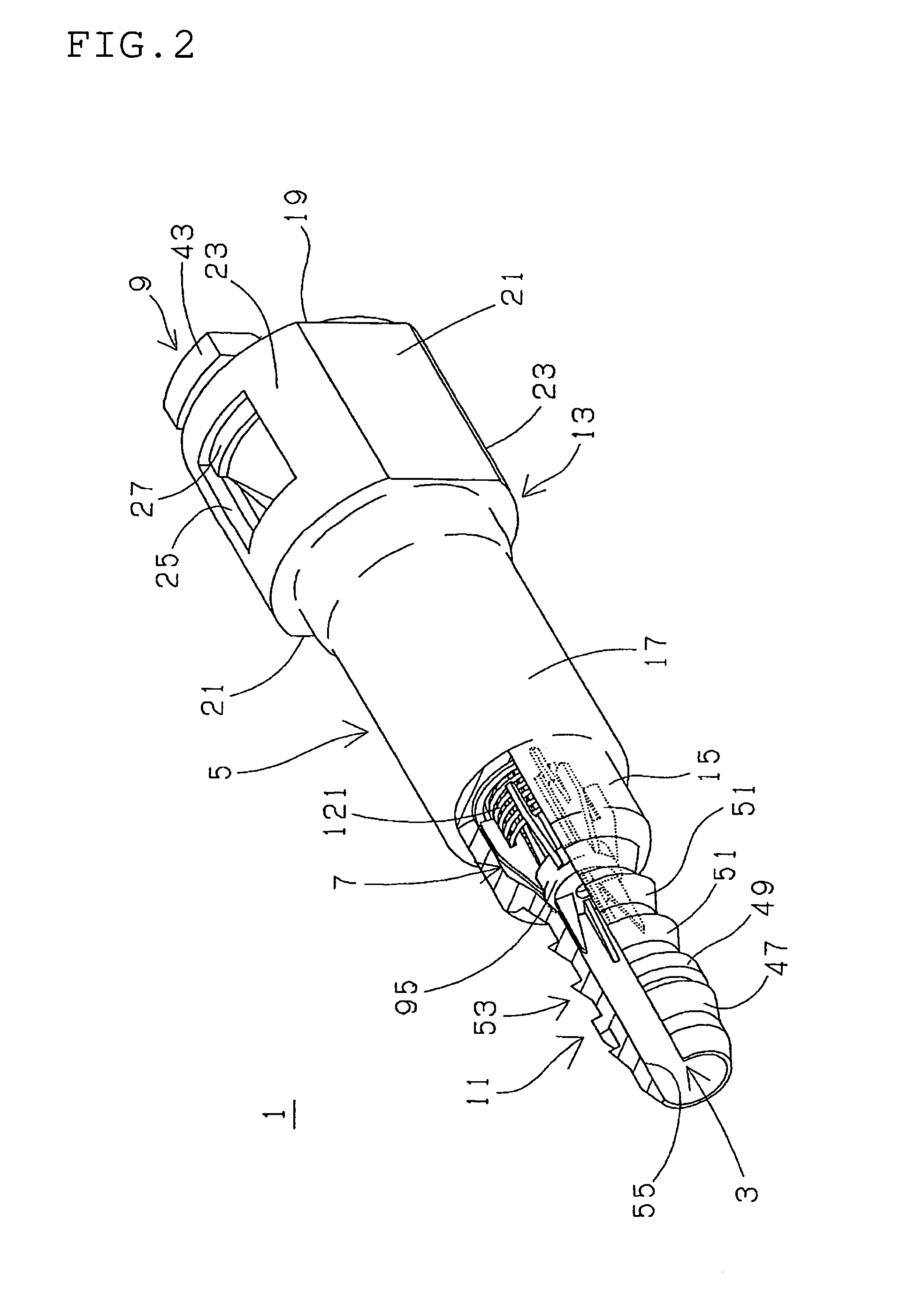Valve connector
a valve connector and connector technology, applied in the direction of functional valve types, couplings, transportation and packaging, etc., can solve the problems of unstable operation of the valve body, inability to maintain certain pressure-flow characteristics of the valve connector, etc., and achieve the effect of long traveling distan
- Summary
- Abstract
- Description
- Claims
- Application Information
AI Technical Summary
Benefits of technology
Problems solved by technology
Method used
Image
Examples
Embodiment Construction
[0026]A valve connector 1 as shown in FIGS. 1 and 2 is used, for example, for evaporation piping or vapor return piping of a tank of fuel such as gasoline, etc., to control flow of a vapor. The valve connector 1 comprises a connector housing 5 having a through-path 3 in an axial direction, an internal check valve 7 fitted and incorporated in the connector housing 5, and a retainer 9 fitted to the connector housing 5. The connector housing 5 is made of glass fiber reinforced polyamide (PA / GF), for example, glass fiber reinforced nylon 6. The retainer is made of polyamide (PA), for example, nylon 12. The connector housing 5 integrally has a tube connecting portion 11 of a small diameter on one axial end thereof, a pipe inserting portion 13 on the other axial end thereof, and a valve housing 15 between the tube connecting portion 11 and the pipe inserting portion 13. The pipe inserting portion 13 integrally includes a pipe support portion 17 on one axial end thereof, and a retainer hol...
PUM
 Login to View More
Login to View More Abstract
Description
Claims
Application Information
 Login to View More
Login to View More - R&D
- Intellectual Property
- Life Sciences
- Materials
- Tech Scout
- Unparalleled Data Quality
- Higher Quality Content
- 60% Fewer Hallucinations
Browse by: Latest US Patents, China's latest patents, Technical Efficacy Thesaurus, Application Domain, Technology Topic, Popular Technical Reports.
© 2025 PatSnap. All rights reserved.Legal|Privacy policy|Modern Slavery Act Transparency Statement|Sitemap|About US| Contact US: help@patsnap.com



